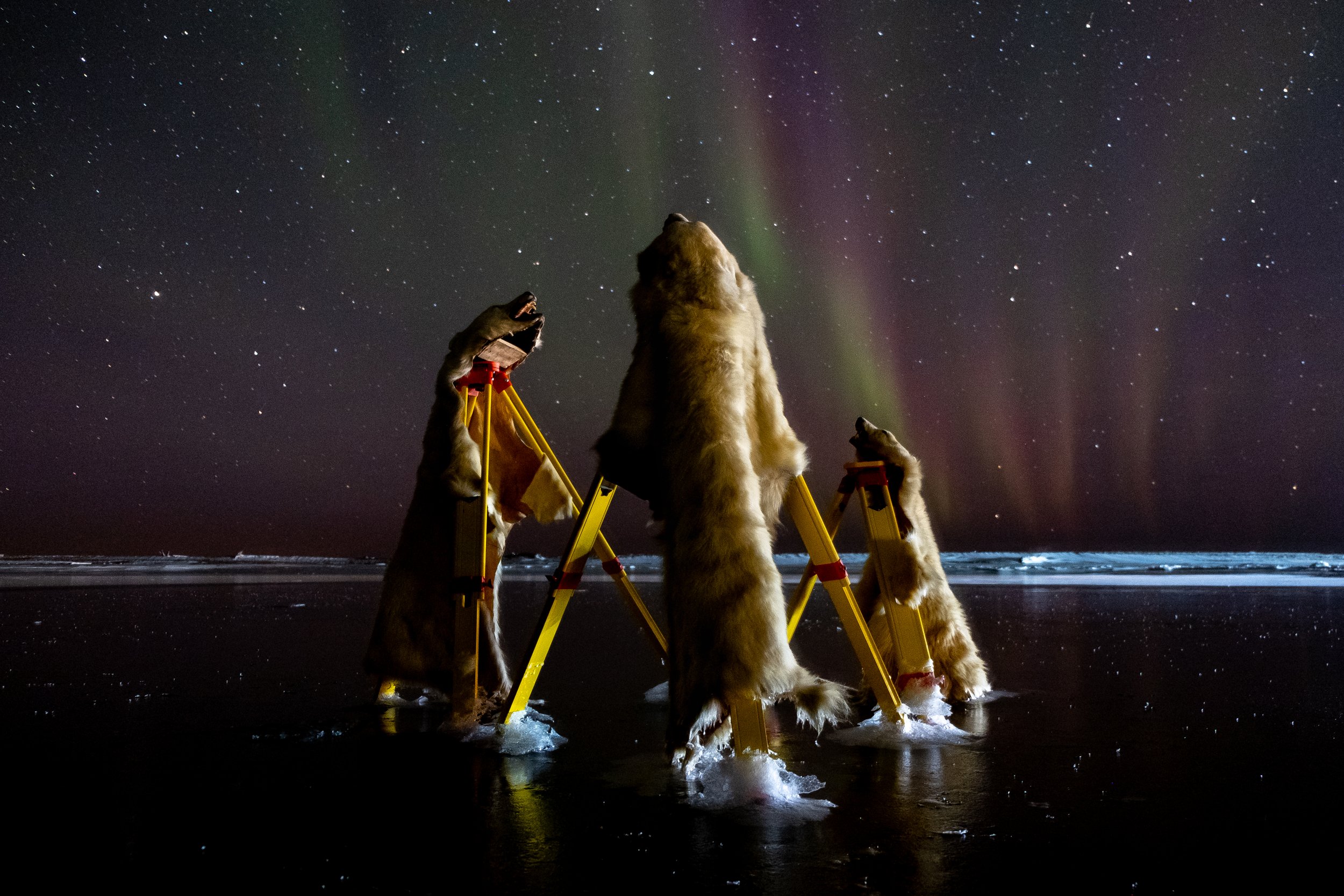Aidainnaqduanni, Aurora (2020); Archival inkjet on Hahnemühle Photo Rag Baryta; 32” x 48”; Photo Kyra Kordoski
Aidainnaqduanni, Morning (2020); Archival inkjet on Hahnemühle Photo Rag Baryta; 32” x 48”; Photo Kyra Kordoski
Aidainnaqduanni means ‘we are finally home’ in Inuvialuktun. These images present an assemblage installed outside Maureen Gruben’s home in Tuktoyaktuk, NWT. The three vintage polar bear rugs were gifted to her by a Vancouver museum. Returned to the Arctic, they are paired with industrial survey tripods recently salvaged from an abandoned 1980s oil camp. The work addresses tensions between land as home and land as finite industrial resource. Aidainnaqduanni also offers a concise glimpse into place—for much of the Arctic year home is a dazzling layer, both harsh and fragile, between stars and ice.

